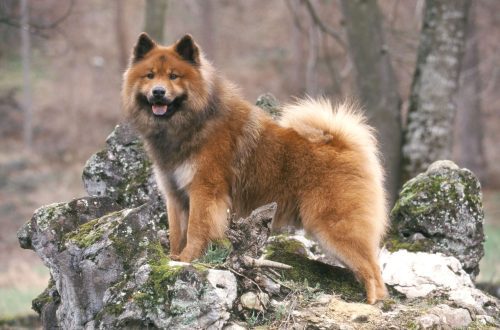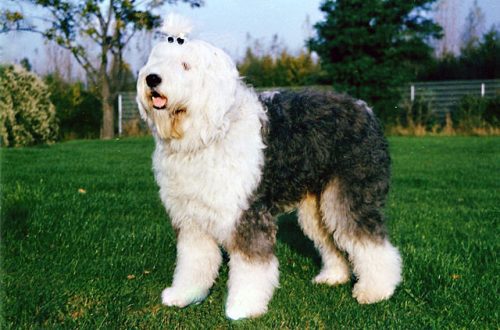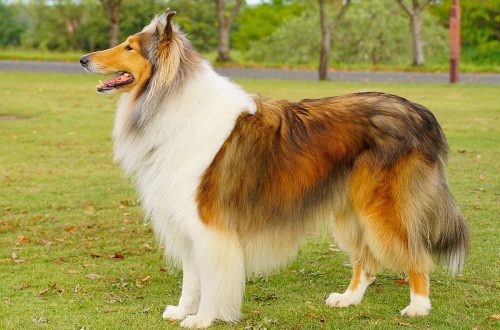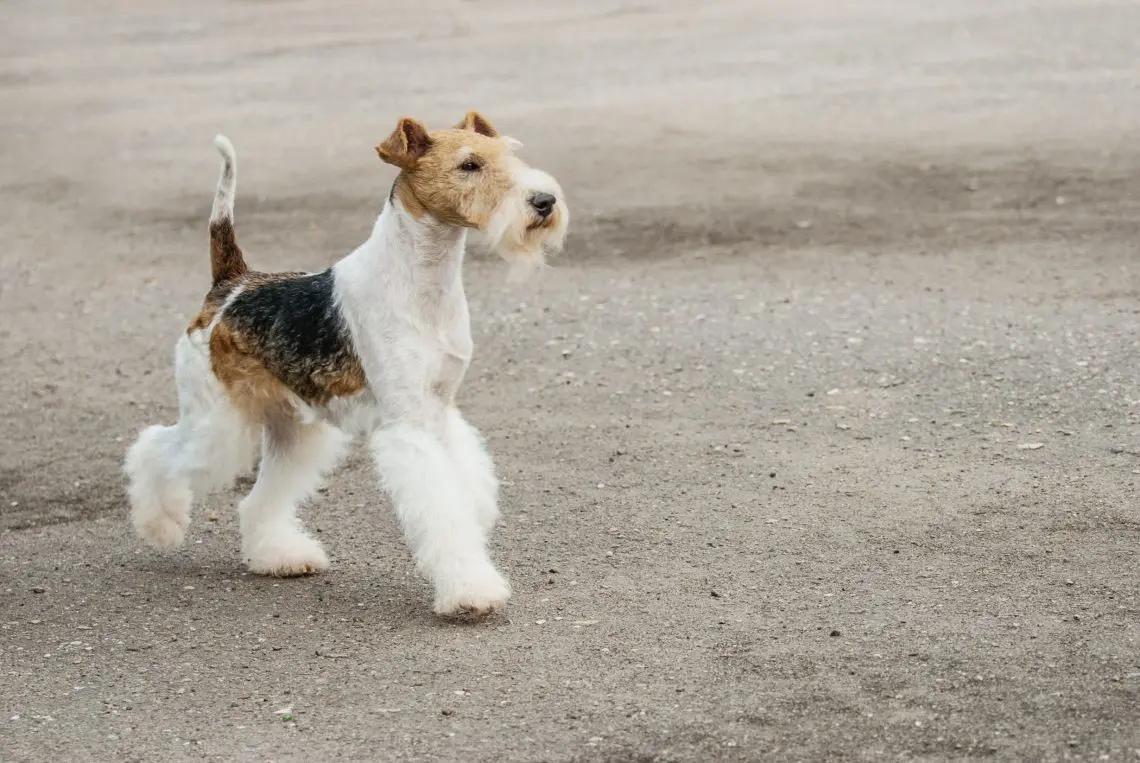
Fox Terrier
The Fox Terrier is a breed of small, square dogs that traditionally specialized in burrow hunting. Today, Fox Terriers exist in two varieties – wire-haired and smooth-haired.
Contents
- Characteristics of Fox Terrier
- Basic moments
- History of the Fox Terrier
- Video: Fox Terrier
- Fox Terrier Appearance
- Photos fox terrier
- Fox Terrier character
- Education and training
- Hunting with a fox terrier
- Maintenance and care
- Fox Terrier Health and Disease
- How to choose a puppy
- Photos of fox terrier puppies
- How much does a fox terrier cost
Characteristics of Fox Terrier
| Country of origin | Great Britain |
| The size | average |
| Growth | 38.5-39.5 cm |
| Weight | 7–8 kg |
| Age | 13–14 years old |
| FCI breed group | terriers |
Basic moments
- The Fox Terrier is not a breed for introverts and couch potatoes. These dogs love to play and frolic, contacting a person along the way. Therefore, the best owner for a fox is an adept in an active lifestyle or a professional hunter.
- All fox terriers do not tolerate loneliness, so an animal left uncontrolled for a long time can arrange a local apocalypse in the apartment.
- The Fox Terrier is a dominant dog. This means that growing up, the puppy will repeatedly try to switch roles with the owner.
- At the beginning of the 20th century, breeders preferred smooth-haired fox terriers as more skilled hunters. In addition, while working in the burrow, the tight-fitting hair of the dogs almost did not get dirty, so they practically did not need care.
- Fox Terriers masterfully deal with almost any burrowing animal, even if it is larger than them. But they especially showed themselves in fox hunting – hence the root “fox” in the name of the breed (from the English fox – fox).
- Recklessly surrendering to hunting instincts, pets often get lost during walks, so it is better not to let the dog off the leash on the street.
- The rough-haired variety needs regular trimming, while the smooth-haired variety is easily content with weekly brushing.
- Fox Terriers love to bark, and it can be very difficult to appease them. For owners who bring a puppy to a city apartment without soundproofing, this feature of the breed can become an additional reason for conflicts with neighbors.
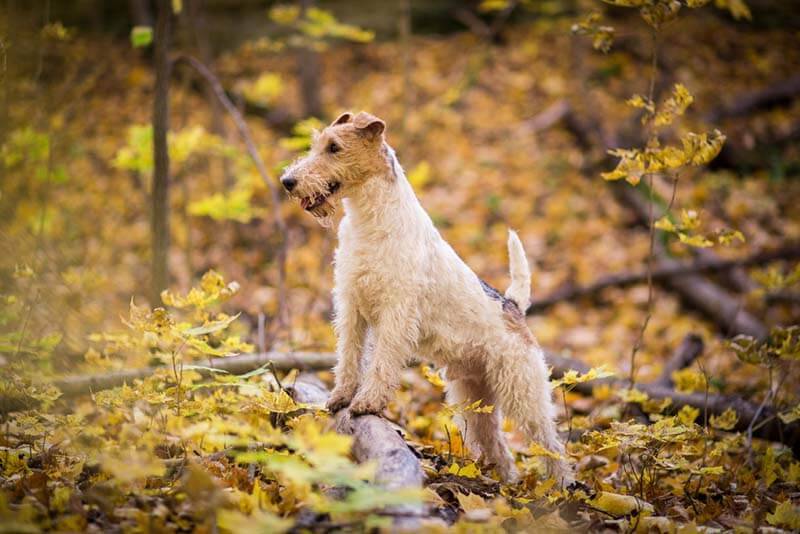
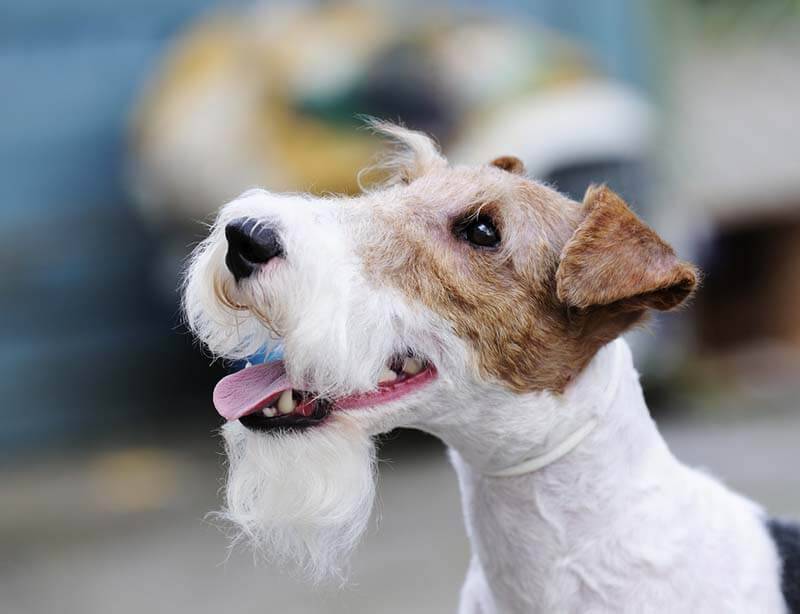
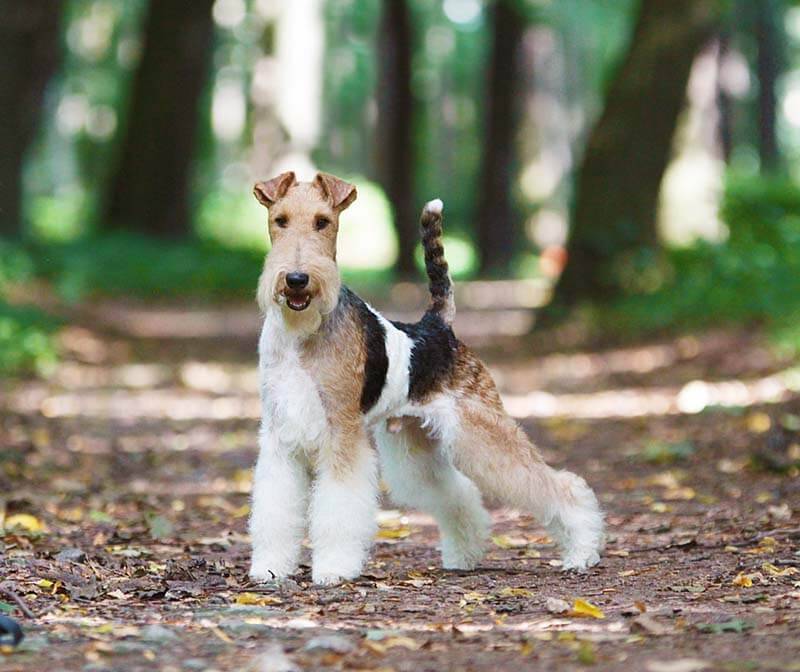
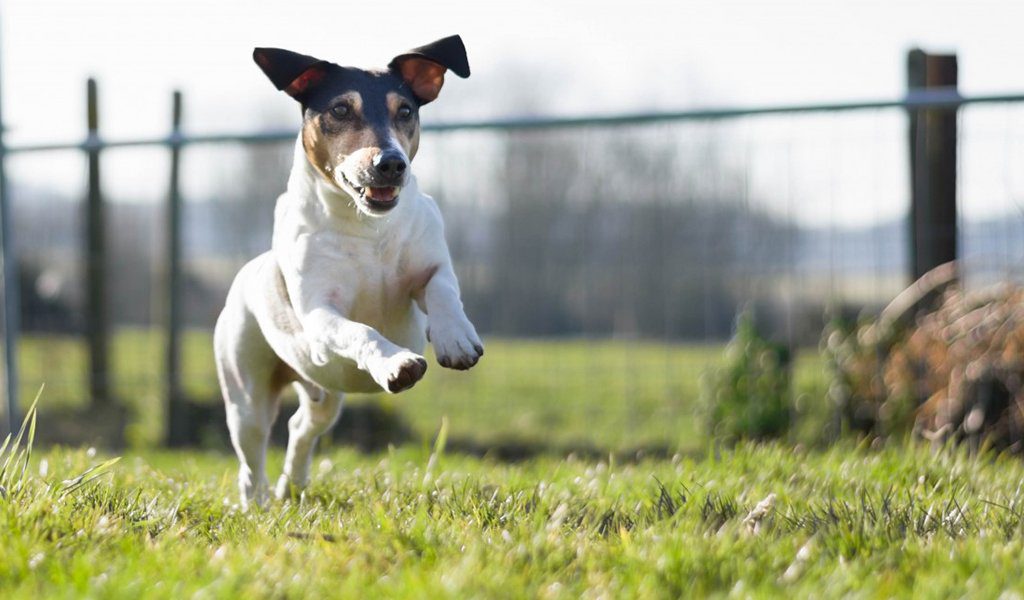
The Fox Terrier is a hunter, explorer, sportsman and gambler with a mischievous but strong personality. Despite the ability to equally distribute their own love among all households, the pet, nevertheless, needs one owner who will direct and restrain his stormy energy. In response, the fox terrier will try to fulfill the owner’s requirements in a timely manner, unless, of course, they run counter to his hunting preferences.
History of the Fox Terrier

Fox Terriers are natives of the British Isles, originally specialized in catching small burrowing animals and exterminating rodents. At the same time, the first mention of these nimble, sonorous dogs, making their way into any gap for prey, belong to the ancient Roman conquerors and date back to 55 BC. In the XIV century, the British became seriously interested in burrow hunting, to which they began to attract fox terriers. According to historians, at first, British peers hunted precisely with smooth-haired representatives of this breed, which were born during the crossing of the Old English black and tan terrier with a greyhound , beagle and bull terrier .
Wire-haired foxes were bred much later (approximately at the end of the 19th century), tying individuals with coarse, wiry hair with welsh terriers. However, despite significant differences in genotype, both wire-haired and smooth-haired fox terriers continued to be considered the closest relatives. Moreover, for several decades, representatives of both varieties were crossed with each other in the hope of obtaining high-quality offspring.
The fox terriers began to take shape in an independent breed by the end of the 18th century, after the English esquires were deeply addicted to fox hunting. Further – more: since 1859, animals began to storm dog shows, where, by the way, they did not immediately find their niche. Fox terriers reached Russia by the middle of the 19th century, and ten years later the breed was already well-known by French, Italian and Dutch breeders. In 1875, the fearless “burrow conquerors” had their own standard of appearance, which first secured them a place in the KC (English Kennel Club), and later recognition of other cynological associations.
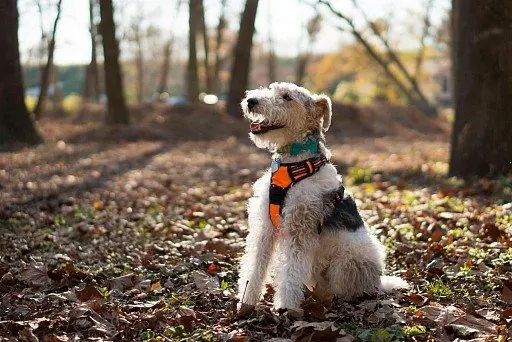

Video: Fox Terrier
Fox Terrier Appearance


Moderation in everything is the main principle that guided the breeding specialists in shaping the appearance of the modern fox terrier. Bony but not coarse, stocky but not squat, these agile burly beasts are a true example of stateliness and hunting elegance. With a relatively small growth (up to 39 cm), foxes, however, do not give the impression of decorative sofa pets. Moreover, just one glance of the dog already indicates that you have a strong personality in front of you, to whose heart and mind you will need a special key, and, possibly, a whole set of different-sized master keys.
Head
The upper part of the skull of the fox terrier is flat, the length of the head and muzzle is approximately the same. The stop is very slight, of a smoothed type.
Jaws
Fox Terriers have very strong jaws with a full, scissor bite.
Nose
Lobe black color, medium size.
Eyes
The eyes of the fox terrier are small, rounded, without a noticeable bulge. The iris is colored in a dark shade.
Ears
All fox terriers have small, triangular-shaped ears, the tips of which are lowered towards the cheekbones.
Neck
The neck of the fox terrier is dry, but with sufficiently developed muscles, gradually thickening towards the body.
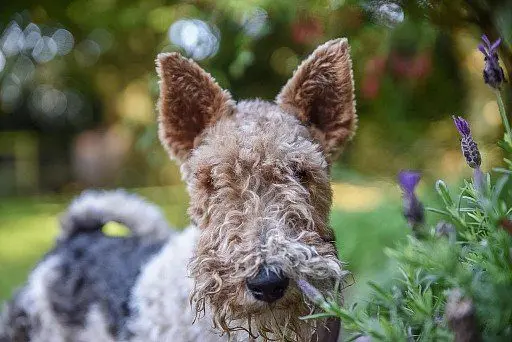





Frame
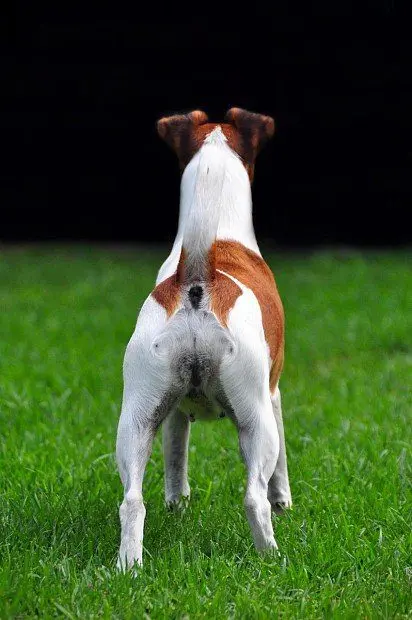

The back and loin of the dog are short, straight and muscular. The chest is deep, with prominent false ribs.
Legs
The forelegs are straight, with long shoulders and elbows pointing back. Hind limbs with massive, elongated hips and sheer metatarsus. The paws of the Fox Terrier are compact, rounded in shape with elastic pads.
Tail
The tail of the dog is traditionally docked at 1/3. The exception is European countries, where this procedure is prohibited by law. The docked tail of the Fox Terrier must be carried straight upright, without tucking to the side or twisting.
Wool
Wirehaired fox terriers boast a fluffy “fur coat” of coarse, wiry hair 2 to 4 cm long. In the smooth-haired variety, the coat is shorter and thicker, and the hairs lie close to the body.
Color
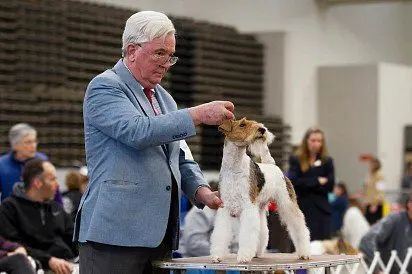

The classic type of fox terrier color is white with black, black or reddish-brown markings all over the body.
Disqualifying signs
- Blue, coffee and red markings on coat. The presence of tigers.
- Downy wool.
- Depigmented or mottled nose.
- Erect or hanging, like a hound, ears.
- Overshot or undershot.
Photos fox terrier






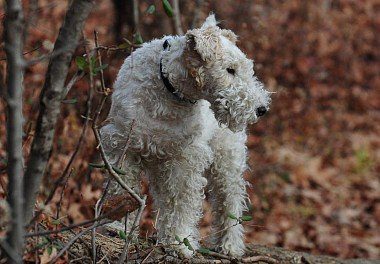









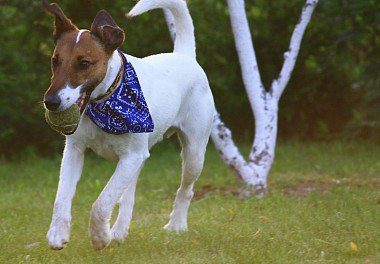

Fox Terrier character
Fox terriers are tough nuts who are not so easy to convince that the universe revolves not only around themselves. Possessing a lively temperament and great leadership potential, they will certainly try to suppress the owner with their authority, so not raising representatives of this breed is more expensive for themselves. As befits dogs “sharpened” for hunting, Foxes are energetic, playful and truly unrestrained, which means that they are excellent companions for children’s fun.


Curiosity is another typical fox terrier trait. From puppyhood to old age, these slickers won’t miss a single suspicious slit without trying to poke their nose into it. As for peaceful coexistence with other four-legged pets, everything here depends on the individual qualities of the dog. Some fox terriers have a completely accommodating character, therefore they are able to tolerate cats and other animals next to them. At the same time, desperate fighters, ready to pat the skin of any fluffy, are not so rare among this breed. A proven fact: fox terriers are especially intolerant of other dogs and small rodents. Firstly, they feel in rivals, and secondly, they feel easy prey.
Of the specific “hobbies” typical of the representatives of this family, it is worth noting the passion for digging holes, arising from hunting instincts, and racing for any type of transport, from a bicycle to a city bus. By the way, in order to dig a pit, a fox terrier does not have to be on the street at all. An animal deprived of a normal walk will definitely find an alternative solution and simply pick up the laminate or parquet in your apartment. Fox Terriers, who for some reason do not shine to become skilled hunters, are easy to retrain into first-class watchmen. As practice shows, a heightened sense of ownership, combined with natural fearlessness and boisterous barking, gives very good results.
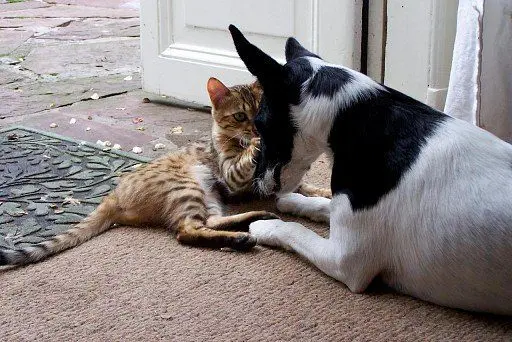



Education and training
For the most part, fox terriers are not eager to learn, although it is quite possible to raise executive and obedient pets from them. The main thing is to demonstrate to the animal your own involvement in the process, and then the fox terrier himself will begin to go out of his way to please the adored owner. It’s definitely not worth overloading a four-legged student: classes should be conducted in a lively, playful way and not bother the dog with monotony. To do this, often use the element of surprise. For example, change teams abruptly. By the way, experienced cynologists recommend training after the animal has had a good walk. In this case, it is easier for the puppy to concentrate on the instructions of the mentor.


It is very important to teach the Fox Terrier to curb his hunting instincts and emotions. On walks, the pet must behave more or less restrainedly and follow the owner’s commands on demand. Of course, from time to time the fox terrier will be “carried away” towards gaping cats, but such situations should be treated with understanding. A dog is not a robot and needs to let off steam from time to time. One of the most important skills that a puppy needs to develop is using an outdoor toilet. And since fox terriers cope with this wisdom quite easily, then, if desired, they can be taught to relieve themselves on command.
The second useful skill that every fox terrier should acquire is normal perception of the leash. In parallel with learning to walk on a strap, you can carry out OKD with a puppy, since wearing a collar in itself disciplines the pet, restraining its ardor, and therefore facilitates the training process. Given the natural passion of foxes for carrying objects in their teeth, they can be trained in fetching. At the same time, the toys that the animal will bring should not be plastic and hollow, otherwise the fox terrier will quickly gnaw them.
Exhibition individuals from an early age are taught to touch. Fox terrier puppies are stroked on the back and head, sipped by the tail, gradually moving to the formation of the correct stance. It is highly desirable to involve strangers in this matter, since in the ring the dog will be interested mainly in strangers, whom it must perceive adequately.
At home, fox terriers also need to instill norms of behavior and restraint. In particular, try not to treat your ward at the moment when you yourself are eating at the table, otherwise very soon he will begin to climb on him to feast on him (yes, foxes are also unusually jumpy). Be careful with the choice of toys for your baby, because the fox terrier is the kind of dog that loves to generalize everything. Therefore, if you tease the puppy with a rag or napkin, be prepared for the fact that he will see only another toy in the curtains and your trousers.
Hunting with a fox terrier
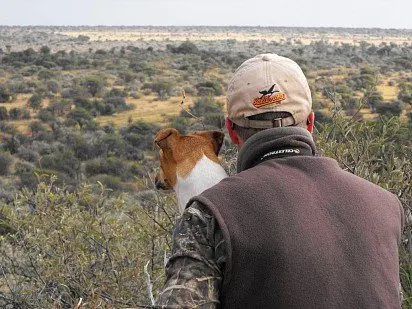

It is possible and necessary to hunt with a fox terrier, although recently representatives of this breed are considered more as companions and athletes. It is allowed to introduce puppies to burrow hunting from the age of 3 months. The first classes are held in the so-called training hole – a straight, shallow tunnel dug in the ground with an ordinary shovel and covered with a wooden deck on top. If you don’t want to deal with the arrangement of training “catacombs” on your own, you can go with your pet to some hunting club where such facilities already exist.
To bait a fox terrier on an animal, they begin at 8-12 months. The object for training should be medium-sized and not exceed the size and strength of the dog, so small foxes and rats are considered the best options. But it is better to leave the bait for a badger as a snack when the dog gains experience and courage. One of the most common mistakes is practicing fox terrier hunting skills on cats. Not only is the method itself savage, it also forms the wrong grip across the body in Foxes, which in a real hunt will result in additional injuries for the dog.
Important: the first grafting is carried out not in a hole, but on the surface of the earth, since in the presence of the owner the fox terrier behaves more boldly. During training in an underground tunnel, the fox terrier may get lost at first and not take the beast – this is normal. In such cases, the dog is simply allowed to bark a little at potential prey, after which it is removed from the hole.
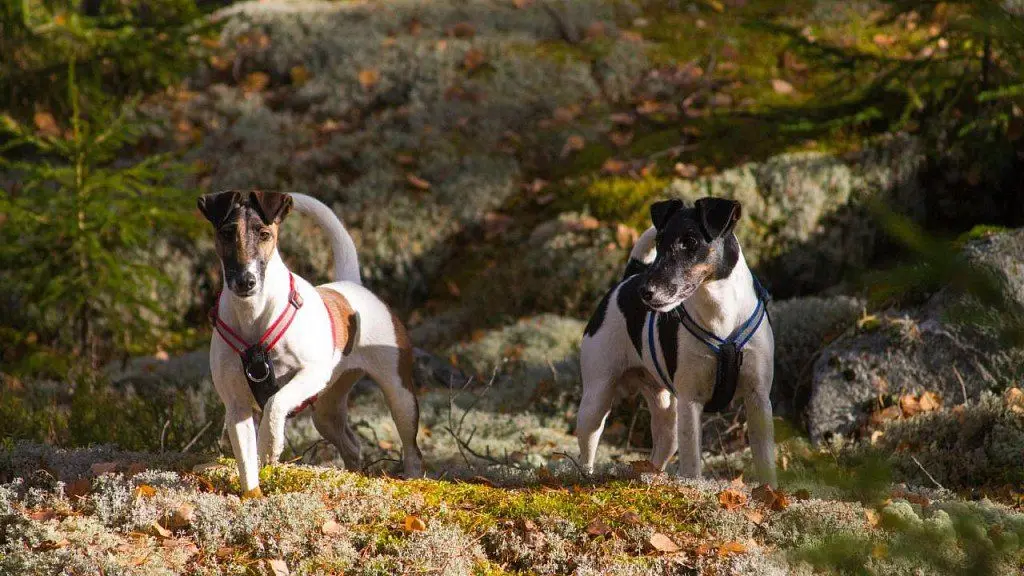

Maintenance and care
In terms of housing claims, fox terriers are practically trouble-free pets, as they take root well both in a private house and in an apartment. The only thing is that city dwellers will have to walk more often and more intensively so that they do not have the strength to mess up in their own homes. If the dog lives in a country cottage with a personal plot, then he is, by definition, happy, because he has more freedom of movement than his apartment relative. True, it is always easier for such a fox terrier to escape by jumping over a low fence. Accordingly, if you bring your ward to the country, take care of high fences in advance that will cool his ardor.
Hygiene


Smooth-haired fox terriers are not as elegant in appearance as their wire-haired counterparts, but they are less demanding in terms of care. Smooth-haired foxes are combed once a week with a regular brush, and they are washed even less often, since their hair has a dirt-repellent property and almost does not get dirty. It will take longer to tinker with wire-haired individuals: 3-4 times a year such fox terriers are trimmed. Dogs, of course, are not happy with this procedure, so start pinching your pet as early as 1.5-2 months so that he gets used to it as soon as possible. The hair of wire-haired fox terriers is designed in such a way that, when falling out, it does not fall out, but clings to the rest of the hairs. Accordingly, if the dog is not regularly trimmed, she herself removes dead hairs, combing them out with her paws and gnawing with her teeth, at the same time injuring her own skin.
The eyes of the fox terrier do not require increased attention, but the paws of the representatives of this breed are very delicate, so they need frequent washing (ideally after each walk) and systematic replenishment with a moisturizer. In addition, you should not get too carried away cleaning the ears of the fox terrier. Remove only visible dirt, specks and sulfur lumps once every two weeks.
Feeding
Fox terriers deal with food in the most merciless way, as a result of which they often overeat and get fat. To prevent this from happening, do not feed your pet with treats and get rid of the habit of putting an additive in his bowl. The easiest way to determine the dosage of food is if the basis of the diet of the fox terrier is “drying” (super-premium or holistic class). With “natural” it is more difficult to calculate the calorie content of one serving, but it is also quite possible.
Allowed foods in the diet of fox terriers:


- beef and lamb;
- beef giblets (only boiled);
- cottage cheese;
- sea fish (fillet);
- egg;
- vegetables and fruits;
- greens;
- cereals (buckwheat, rice, oatmeal).
Once a week, it is useful for fox terriers to starve a little to cleanse the intestines, therefore, on fasting days, the dog is given only rye crackers, raw carrots and water. Vegetables are present on the fox terrier’s menu, as a rule, in stewed form (carrots are an exception), but animals are given fruits only raw.
The menu of a puppy is very different from the diet of an adult dog. They begin to feed the babies, while they are not yet taken away from the bitch. In particular, in the first weeks of life, puppies are given diluted powdered milk with the addition of a small amount of sugar, which is subsequently replaced by semolina. By the end of the first month of life, little fox terriers should get acquainted with the taste of meat, which is served to them in a scraped form, and also taste chicken yolk. Well, 5-week-old puppies can be treated with raw vegetables. As for 3-month-old babies, they should be pampered with brain bones and cartilage more often, since during this period the puppy skeleton is actively forming.
Fox Terrier Health and Disease


Fox Terriers are not particularly morbid, but have a genetic predisposition to certain ailments. This means that, on the one hand, animals can get sick quite seriously, and on the other hand, there are enough and quite healthy individuals among them who visit the veterinarian’s office only for the sake of vaccination and cleaning their ears.
Typical diseases of fox terriers:
- diabetes;
- Perthes disease (impaired blood supply to the femoral joint, leading to necrosis of its head);
- distichiasis (eye disease);
- progressive deafness;
- myasthenia gravis;
- epilepsy.
Among other things, fox terriers are prone to food allergies and infectious diseases, so you should be extremely careful when introducing new foods into your dog’s diet, and also do not neglect routine vaccinations.
How to choose a puppy
- Decide who exactly you need – a representative of the exhibition line or a hereditary hunter. There has long been an unspoken division “according to profile” among kennels, so looking for show class puppies from a breeder specializing in working fox terriers is not an idea.
- Carefully study the pedigree of babies. If the puppy’s parents did not shine at the exhibitions, it is unlikely that their offspring will differ in this regard.
- The optimal age for selling fox terrier puppies is 1-2 months. If they try to give you a younger representative of the breed, most likely, the breeder saw some kind of defect in him, which will manifest itself even brighter with age. As an option: the owner of the nursery simply saves on the maintenance of his wards, in connection with which he tries to sell the “live goods” ahead of schedule.
- If you are taking a fox terrier to go hunting with him for the foreseeable future, pay attention to his behavior. Preference – puppies with leadership manners and healthy aggression towards their own kind.
- Ask the owner of the kennel to show you the hunting certificates of the puppy’s parents, if any. Pay special attention to characteristics such as viscosity and malice. If the dog scored 25 or more points for the first quality, and from 20 to 30 points for the second, these are excellent indicators.
- When choosing a future fox hunter, look for a nursery where they adhere to traditions and dock their tails in the first days of life. The fact is that during the persecution of the beast, this part of the dog’s body suffers in the first place. Acquiring a puppy with an undocked tail and subsequently shortening it yourself is not the best option, since with age this operation is more difficult for a dog to tolerate.
Photos of fox terrier puppies
















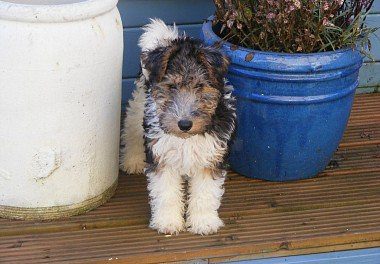

How much does a fox terrier cost
You can get a fox terrier as a pet for an average of 250 – 300$. The offspring, born from titled parents and promising to prove themselves at exhibitions, goes for 300 – 350$. A relatively low price tag is set for adults (approximately up to 270$), but buying such a dog is always risky, since fox terriers have an extremely negative attitude towards moving to a new family and are very attached to the first owner, who in 99 cases out of 100 remains for them sole master for life.





